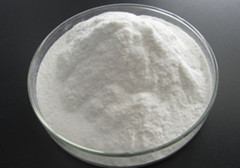Microcrystalline cellulose
-

Microcrystalline Cellulose 102 Certificate of Analysis
.
CERTIFICATE OF ANALYSIS Product:Microcrystalline Cellulose 102 Batch No. 161120 REP DATE NOV.27,2016 Specifications 20kg/bag MFG DATE NOV.21,2016 Quantity 1000kg EXP DATE NOV.20,2018 Tests Standard USP35 Examinations Identification Positive Positive PH 5.0-7.0 6.2 Ether-soluble Matter(%) ≤0.05 0.03 Water-soluble Matter(%) ≤0.25 0.15…
-

Microcrystalline Cellulose PH101 USP35-NF30
.
Microcrystalline Cellulose PH101 USP35-NF30 BATCH NUMBER 20170405 TEST DATE Apr.06,2017 QUANTITY 3400kg MANUFACTURE DATE Apr.05,2017 PACKING 25kg/bag EXPIRY DATE Apr.04,2019 TEST ITEMS SPECIFICATION RESULTS Appearance White or almost white,fine…
-

Microcrystalline Cellulose 101
.
CERTIFICATE OF ANALYSIS Product:Microcrystalline Cellulose 101 Batch No. 170395 REP DATE MAR.24,2017 Specifications 20kg/bag MFG DATE MAR.18,2017 Quantity 2000kg EXP DATE MAR.17,2019 Tests Standard USP35 Examinations Identification…
-

What is Microcrystalline cellulose (C6H10O5)n
.
Microcrystalline cellulose (C6H10O5)n is refined wood pulp. It is a white, free-flowing powder. Chemically, it is an inert substance, is not degraded during digestion and has no appreciable absorption.…
-

Microcrystalline cellulose Details
.
Microcrystalline cellulose Prepared at the 49th JECFA (1997) superseding specifications prepared at the 46th JECFA (1996), published in FNP 52 Addendum 4 (1996) SYNONYMS Cellulose gel, INS No. 460…
-

Microcrystalline cellulose as Directly Compressible Filler
.
MCC as Directly Compressible Filler: MCC is the most compressible of all the direct compression fillers and has the highest dilution potential and capacity, which is defined as the…
